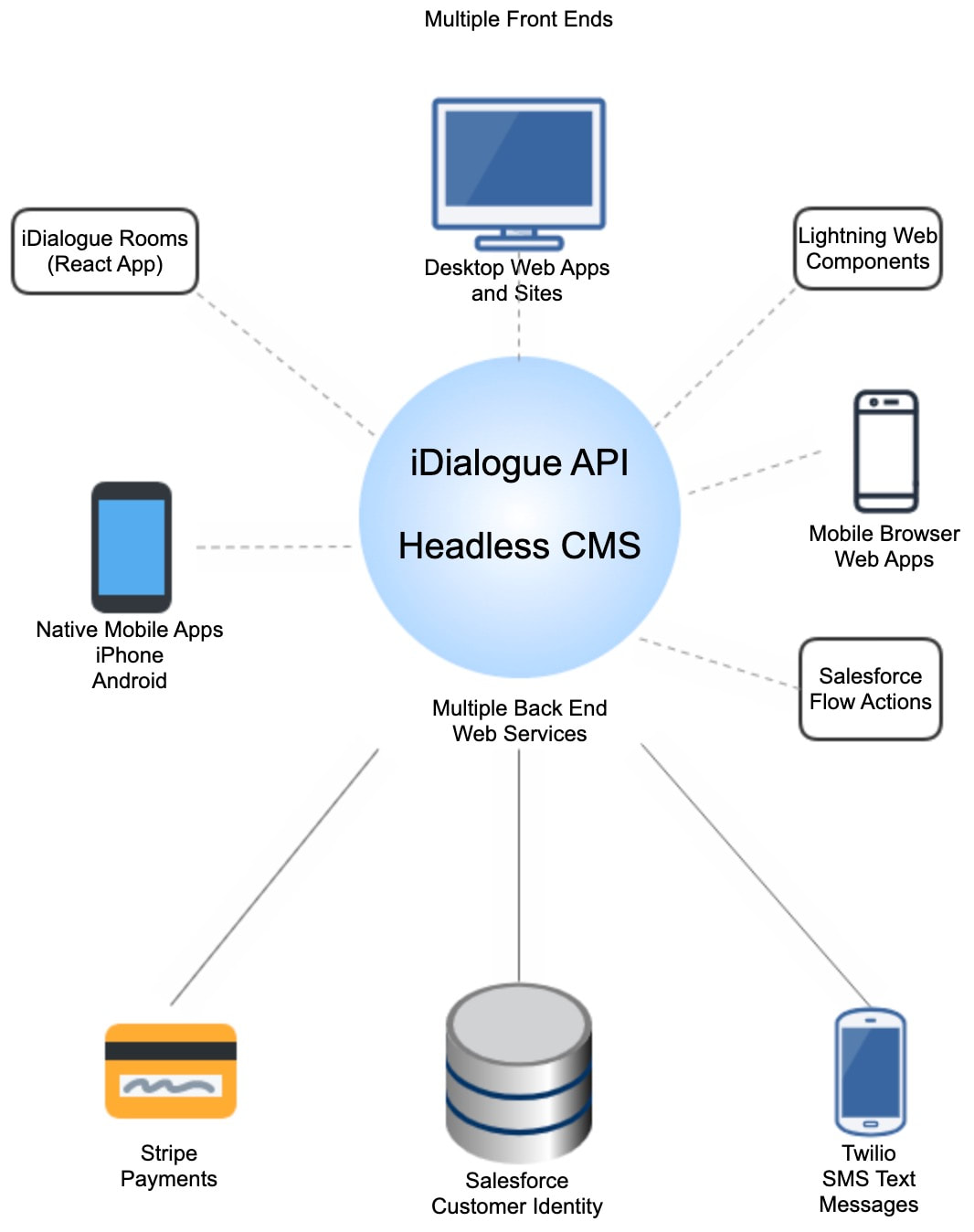What is a Headless CMS? (Salesforce Content)
A headless content management system, or sometimes called an "API First" CMS, decouples the front end clients, aka “heads”, from the backend “body”.
This is in contrast to Web 1.0 content management systems that were more monolithic and primarily evolved from desktop website content only.
Examples of how this technical architecture delivers business value:
- Enables Marketers to centrally manage content in one location, and publish content to multiple form factors
- Defining content using responsive design patterns encourages more content reuse
- Aligns mobile and desktop application development efforts around common user identity, authentication, data models, and content
- Faster time to market and delivery
- Fewer content deployment errors

The iDialogue API is an example of a headless CMS that primarily uses Salesforce as the backend, plus connects with other best-of-breed web services.
Example of front-end apps using the iDialogue API:
- iDialogue public "rooms" are developed using React
- Lightning components
- iPhone and Android native mobile applications
- Mobile browser experiences
- Salesforce Flow Actions
All of the above front ends are centrally supported through a single API.
The iDialogue API also proxies access to various back ends:
- Salesforce: System of record for Contact/User identity and customer data model
- Stripe Payments
- Twilio SMS and Text messaging
- Adobe and Microsoft document conversion services
iDialogue broadly defines "content" as any customer-facing digital asset, including:
- HTML web pages and images
- Raw text
- PDF and Word documents (either dynamically created or static)
- JSON representations of data
- Interactive applications, SPAs, and Javascript